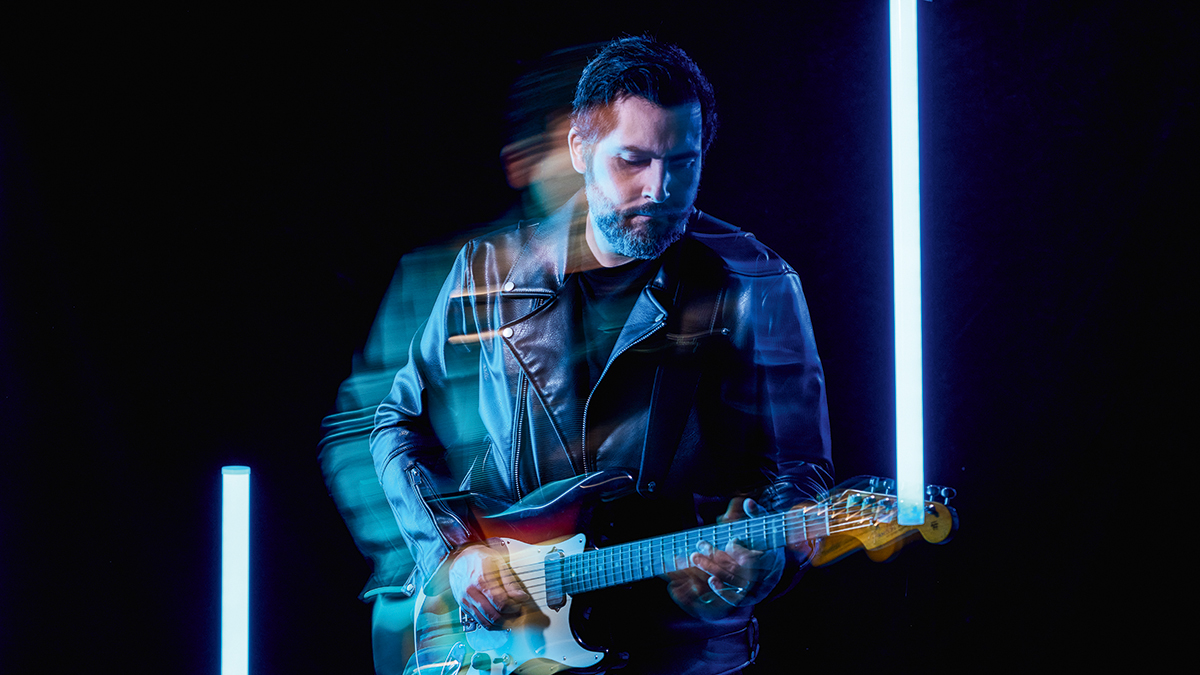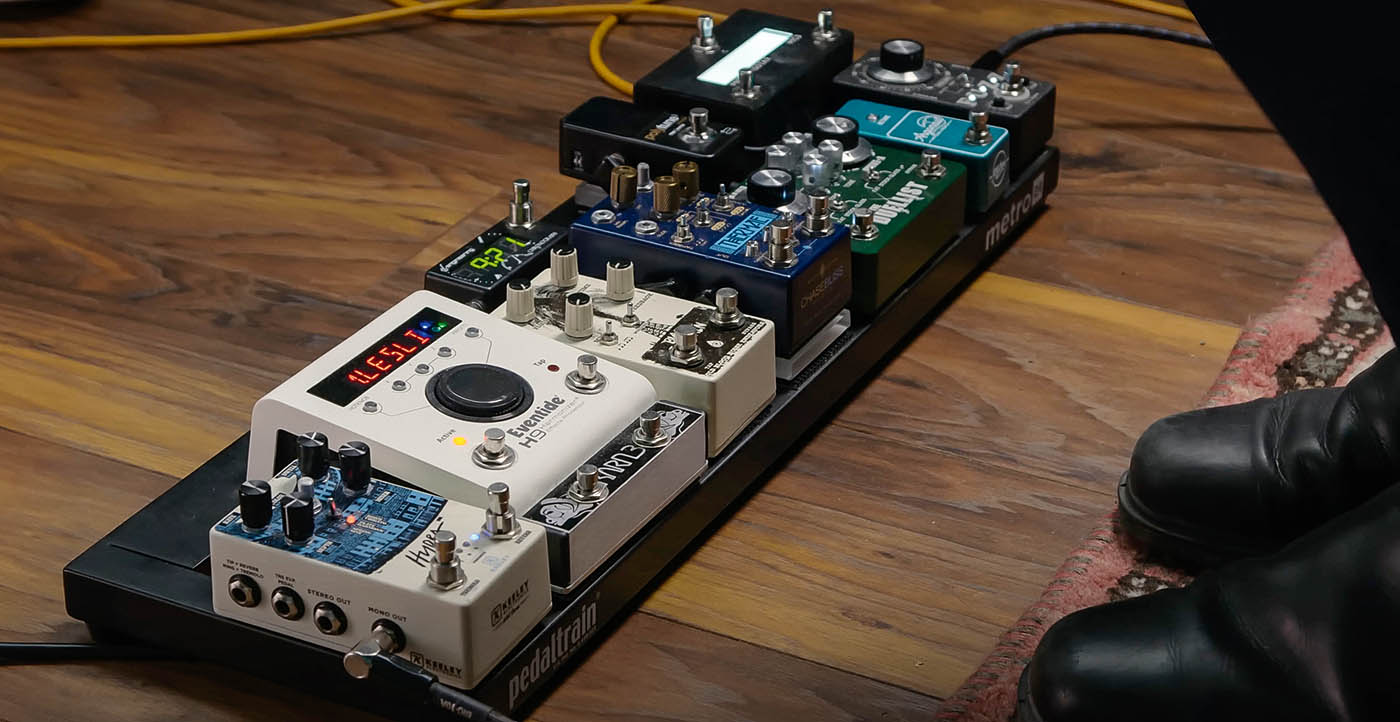“Rubber-bridge guitar is another sonic hemisphere that existed this whole time but was going untapped. It’s really special”: Ariel Posen on his adventures in tone – and why songwriting is like hitting the gym
Tonemeister Ariel Posen stops by to share his tonal revelations on new album Reasons Why – and the long list of guitars he used to make it happen

Many would agree that seeing Ariel Posen live is an unforgettable experience. His understanding of all the elements that go towards creating great electric guitar tone – whether it be in standard tuning or dropped to the depths of his custom baritone – have gained him the respect of both his peers and audiences alike.
His latest album, Reasons Why, came out in the autumn of last year and the ensuing European tour saw him playing in our very own backyard. And so the invitation went out for him to join us for a debrief – plus an accompanying video – about his latest venture.
What sort of mindset did you have when entering the studio to record Reasons Why?
“The impetus was not to do the things I always do. I’ve done a lot of ‘put tremolo on this, put a lot of fuzz on this…’ And it was even more so in the chord changes or the harmony side of things. I tried to run the other way, catching myself each time to say, ‘Hey, you’ve done that a few times already – try something different!’
“I wanted to get more creative with soundscapes and building pads underneath the songs, messing with delays and stuff like that, almost to a point where certain sections sound like there’s a broken tape loop that keeps repeating.
“So there’s a handful of songs where I just went crazy with the Chase Bliss and Hologram [Electronics] effects that can make a sound continue on for minutes and just sit there. Find a good loop, then let it record, then put another one onto it and mix it all together. And it turned out pretty cool.”
What about songwriting – do you find that comes fairly instinctively to you these days?
Get The Pick Newsletter
All the latest guitar news, interviews, lessons, reviews, deals and more, direct to your inbox!
“It did at the time because it was at a point where I had my biggest creative burst ever. I wrote 30 songs and chose 10 of them that I thought were the strongest. Songwriting is instinctive, but sometimes, especially when I’m on the road, it doesn’t ever hit me because there’s too much going on. When I’m in the right mindset and I’m at home, it’s like going to the gym; if you consistently do it, it gets easier and easier.”
When I’m in the right mindset and I’m at home, songwriting is like going to the gym; if you consistently do it, it gets easier and easier
Which gear did you take into the studio for the recording sessions?
“I used my Two-Rock Traditional Clean on everything, except there was one song called Broken But I’m Fine where, on the solo sections, I used this Greer Amps Mini Chief. It’s a little box that sounds like it’s blowing up. That was cool. And there were a couple of songs where I used a rubber-bridge guitar run through a ’60s Super Reverb and this old Gibson Explorer amp – I’m not sure of the model – but those two together are magic with the rubber bridge. Everything else was the Two-Rock.
“I brought a few guitars and I used a lot of other random things that were at the studio. I had my Mule S-type guitar, this Fender Eric Johnson Strat I’ve had forever, my Jazzmaster, and a Gretsch White Falcon, which was used a lot on this album for a lot of the chordal stuff and arpeggios.”

“A Kithara Harland from Ireland made its way onto some of the leads and some other parts, a Josh Williams Mockingbird, which is like a 335-style guitar, and a Case J1. John Case built me this LP-style guitar years ago and it’s got Ron Ellis pickups and it just sounds gigantic. So that’s on some leads as well.
“For acoustics, I used my Collings D1AT for some songs, I used a ’60s Martin 000 of some kind, a ’60s Hummingbird, my ’50s Kay, which is that rubber-bridge guitar, a Morgan Concert model, and a Yamaha dreadnought, which is a Nashville-tuning strung guitar. I have another rubber bridge, which is a modern Recording King guitar, and the Mule Mavis, which is like a resonator but also kind of an electric. Yeah, a lot of guitars were used, I guess!”
We’re hearing a lot about players using rubber-bridge guitars at present…
“Yeah, it’s definitely becoming the cool thing. I use it very sparingly; it adds a different texture to the acoustic side of things that a straight-up acoustic with steel strings and a mic in front of it doesn’t give you.
“It’s just another sonic hemisphere that existed this whole time that was going untapped. So now, it’s nice to fill in certain spaces with it because it just sounds different. When it’s tuned to baritone it almost sounds like pizzicato cello. It’s really special when it’s done sparingly. It’s used more for chordal stuff, but it’s beautiful on melody lines, too.
“There’s a song called Choose where it’s used for the bridge melody part. And in Time Can Only Tell it’s 20 guitar tracks, but a lot of them are acoustics and rubber bridge – it sounds like a string orchestra.”
What in particular inspired your use of Nashville tuning?
“Nashville tuning is great for recording, usually for doubling acoustics. It adds more top-end to the parts and it makes certain parts pop more than they usually do because of that brightness.
“A lot of acoustics can get lost in the mix and if you brighten them up in post[-production] too much it doesn’t quite sound like acoustic after all the compression and processing. So the high-strung gives you almost 12-string sounds, sometimes.”
What tunings did you decide on during the writing process for the album?
“Same as always: I really just play in either standard tuning, or B standard and open tunings. So, open E, open D, open C, sometimes I’ll [use a] capo [for] open Db, open Eb. Those are the only ones I play with. I’ve tried DADGAD, I’ve tried open G… If I spent time with it, I’d learn it, but it just breaks my brain.
“Those tunings are enough for me, it gives me enough variety. And if I’m feeling like I’m in a rut with one of them in writing, I can switch to the another one and breathe some new life, so to speak.”
I’ve tried DADGAD, I’ve tried open G… If I spent time with it, I’d learn it, but it just breaks my brain
You have said that your pedalboard is now pretty much sorted in that it hasn’t changed much in the past year or so…
“That’s primarily because it just covers the sounds of the songs we play. I’ve had to adjust some of the sounds for this new record to embellish some of those spatial ambient sounds I mentioned. But it’s working. I mean, I always love new pedals and new sounds, but I am very much a, ‘Hey, if it works, keep going with it…’ type.
“In the studio, I have a way bigger ’board and I take a big bag of pedals. I take a lot of stuff just to go, ‘Hey, how does this sound?’ You have to compress it down and make a compact version for playing live. It comes down to what is consistent, what sounds good and what holds up.
“Even if it’s not exactly the sound or the pedal from the record – you know, the pedal I liked might be too big and won’t fit, literally. So I have to use something else. But I’m always trying stuff out when all the new things are coming out.”
Were there any new pedal discoveries that you made while recording this album?
“The Chase Bliss Thermae and the Hologram Infinite Jets – I got deep into exploring with those, just because they provided the soundscapes that I’ve never really experienced before and it was very magical.
“R2R has a pedal called the Vintage Wah and it’s a box with one switch and it emulates the sound of a wah pedal at any level. You can have it cocked back all the way and it just stays on that – that sound was cool. I used it on a couple of songs like Learning How To Say Goodbye and So Easy, and it gives you this really snotty almost out-of-phase sound and that was very inspiring and interesting to use. That would definitely be one of the surprises, I’d say.”
R2R has a pedal called the Vintage Wah and it’s a box with one switch and it emulates the sound of a wah pedal at any level... It gives you this really snotty almost out-of-phase sound
After recording the album, the next stage is to play the songs live. Do you find there’s a transition there and that songs take on a new life as live versions?
“It’s really just going on the road. And we rehearse, obviously, and prepare, but it’s been interesting because we’ve been on tour for a week and a half playing the songs and no-one has heard the songs other than the singles. People are reacting well to things they’ve never heard.
“It’s interesting to see what works and what we can change. But we have to take a full production record and transfer it to a trio. Everyone’s put the work in to fill in the sound at times where it’s needed and just make it come together. We’re always tweaking and changing and listening and seeing how we can improve things.”
- Reasons Why is out now.
With over 30 years’ experience writing for guitar magazines, including at one time occupying the role of editor for Guitarist and Guitar Techniques, David is also the best-selling author of a number of guitar books for Sanctuary Publishing, Music Sales, Mel Bay and Hal Leonard. As a player he has performed with blues sax legend Dick Heckstall-Smith, played rock ’n’ roll in Marty Wilde’s band, duetted with Martin Taylor and taken part in charity gigs backing Gary Moore, Bernie Marsden and Robbie McIntosh, among others. An avid composer of acoustic guitar instrumentals, he has released two acclaimed albums, Nocturnal and Arboretum.
“It’s not meant to be anything more than a thank-you – with love, with respect, and with one hell of a guitar solo”: Sammy Hagar set to release track inspired by a dream he had about Eddie Van Halen, co-written with Joe Satriani
“I was really broke. The only way I could get to New York to try out for Talking Heads was to take a family who were moving there in the band van”: Jerry Harrison on making Talking Heads’ 1977 debut and rejecting blues-rock to shape the CBGB guitar sound











